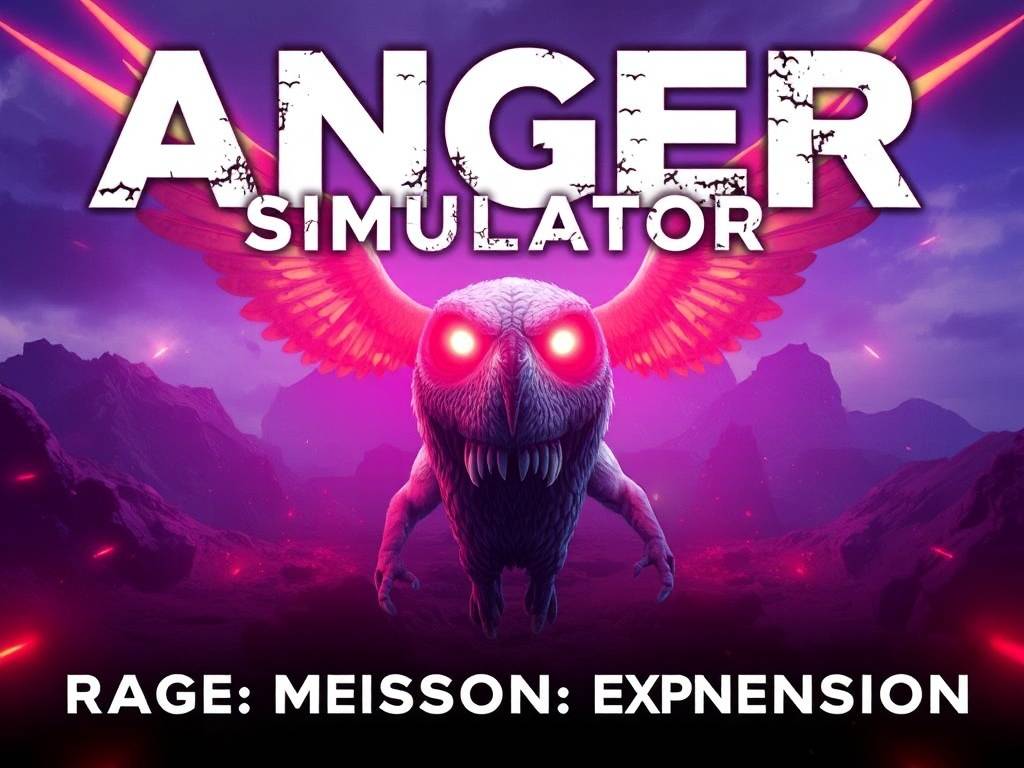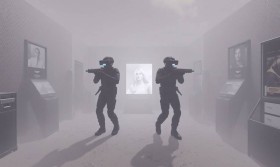In an era where stress is a ubiquitous byproduct of modern life, the pursuit of catharsis has taken many forms. Enter the virtual reality landscape, where a controversial yet fascinating niche has emerged: the Anger Simulator. The original title, a raw and unapologetic sandbox for digital destruction, captivated a dedicated audience seeking a safe outlet for frustration. Now, with the release of the "Rage Missions" expansion, the experience evolves from a simple stress-relief tool into a nuanced, structured, and surprisingly insightful journey into the psychology of anger itself. This expansion doesn't just add more things to break; it constructs a narrative framework that challenges players to understand and channel their rage in ways that are both thrilling and thought-provoking.

From Sandbox to Structured Catharsis
The core appeal of the original Anger Simulator VR was its simplicity. Players were dropped into sterile, destructible environments—a room of breakable plates, an office filled with photocopiers, a junkyard of old cars—and given free rein with an arsenal of virtual tools. It was pure, unadulterated id. The "Rage Missions" expansion, however, introduces a crucial element: purpose. It posits that catharsis is more potent when the anger has a target, a context, and a goal beyond mere obliteration.
The expansion features a series of missions, each a self-contained narrative vignette designed to tap into specific, relatable frustrations. One mission, "The Commute from Hell," places you in a gridlocked traffic jam where aggressive AI drivers constantly cut you off. Your goal isn't just to smash your own virtual car; it's to strategically dismantle the vehicles of the digital nuisances around you, using a giant magnet or a wrecking ball attached to your car. Another mission, "The Infinite Hold," simulates the maddening experience of customer service calls, where you must destroy an ever-growing, labyrinthine automated phone menu system manifesting as a physical, Rube Goldberg-esque machine of buttons, wires, and speakers.

These scenarios are brilliantly designed. They are exaggerated, almost cartoonish, yet they resonate deeply because they are rooted in universal, daily aggravations. By providing a context for the rage, the expansion transforms mindless smashing into a form of interactive storytelling. The anger feels more justified, the release more satisfying. It’s the difference between punching a bag and winning a boxing match; both are physical, but the latter carries the weight of narrative triumph.
The Arsenal of Axiom: Tools for Controlled Chaos
"Rage Missions" significantly expands the player's toolkit, moving beyond standard sledgehammers and bats. Each mission introduces context-specific "Axiom Tools," futuristic devices that allow for creative and large-scale destruction. In the mission "Neighbor's Nightmare," where you are subjected to incessantly loud music from the apartment next door, you are equipped with a "Sonic Resonator." This tool lets you not only smash the stereo but also manipulate sound waves to shatter walls and send furniture flying in slow-motion, satisfying bursts.
Another standout is the "Gravity Mauler" used in the mission "Corporate Shill." Here, you infiltrate a satirical, sterile corporate headquarters to protest against a shady merger. The Gravity Mauler allows you to pick up entire cubicles, water coolers, and obnoxious motivational posters, crush them into a ball of debris, and hurl it through the CEO's panoramic window. These tools empower the player, turning them from a simple vandal into a force of nature, a god of chaos reigning judgment upon digital representations of life's irritants.
The Psychology of the Release: More Than Just Breaking Stuff
What sets "Rage Missions" apart from its predecessor is its subtle engagement with the psychology of anger. While the action is over-the-top, the mission design often encourages strategic thinking over blind fury. The mission "Systemic Overload," for example, tasks you with destroying a corrupt data center. Blindly smashing servers might feel good initially, but to complete the mission efficiently and unlock the "Zen Rage" bonus, you must identify and destroy key structural supports, causing a magnificent chain reaction of collapse. This mechanic subtly teaches a valuable lesson: targeted, intelligent action is often more effective and ultimately more satisfying than uncontrolled outbursts.
Furthermore, the expansion includes a new "Post-Mission Calm" feature. After the dust settles and the mission is complete, the environment often transforms. The wreckage of the office might be replaced by a serene, virtual garden; the shattered traffic jam might give way to an open, peaceful coastal highway. This deliberate pacing—building tension, explosive release, and peaceful resolution—mirrors healthier emotional regulation cycles. It’s a clever, non-preachy way of suggesting that the goal of expressing anger should be to reach a state of calm, not to dwell in the rage itself.
The Verdict: A Surprisingly Sophisticated Sequel
The "Rage Missions" expansion for Anger Simulator VR is a masterclass in evolving a simple concept into a deeper, more engaging experience. It successfully argues that virtual reality can be a potent medium for emotional exploration and release. By framing destruction within relatable narratives and providing creative tools for chaos, it elevates catharsis to an art form.
It is not a glorification of anger, but rather a safe, controlled, and consequence-free simulation of it. In a world where people are often told to suppress their frustrations, this expansion offers a valuable digital playground to acknowledge, experience, and ultimately release them. It’s a thrilling, visceral, and unexpectedly thoughtful journey that proves sometimes, the best way to deal with negative emotions is not to ignore them, but to put on a headset and give them a purpose. The "Rage Missions" expansion is more than just an add-on; it's a compelling argument for the therapeutic potential of virtual worlds.


















